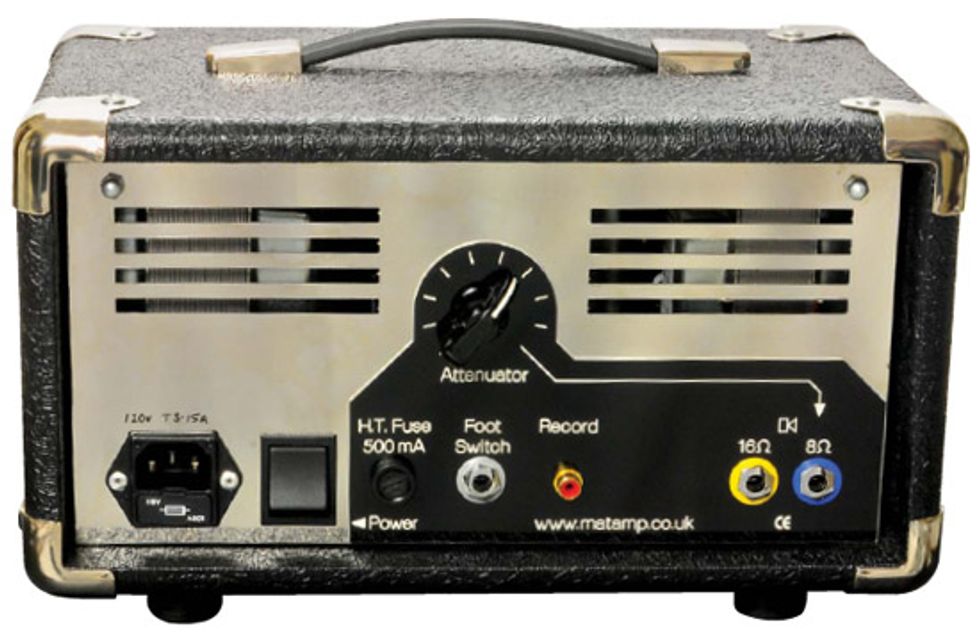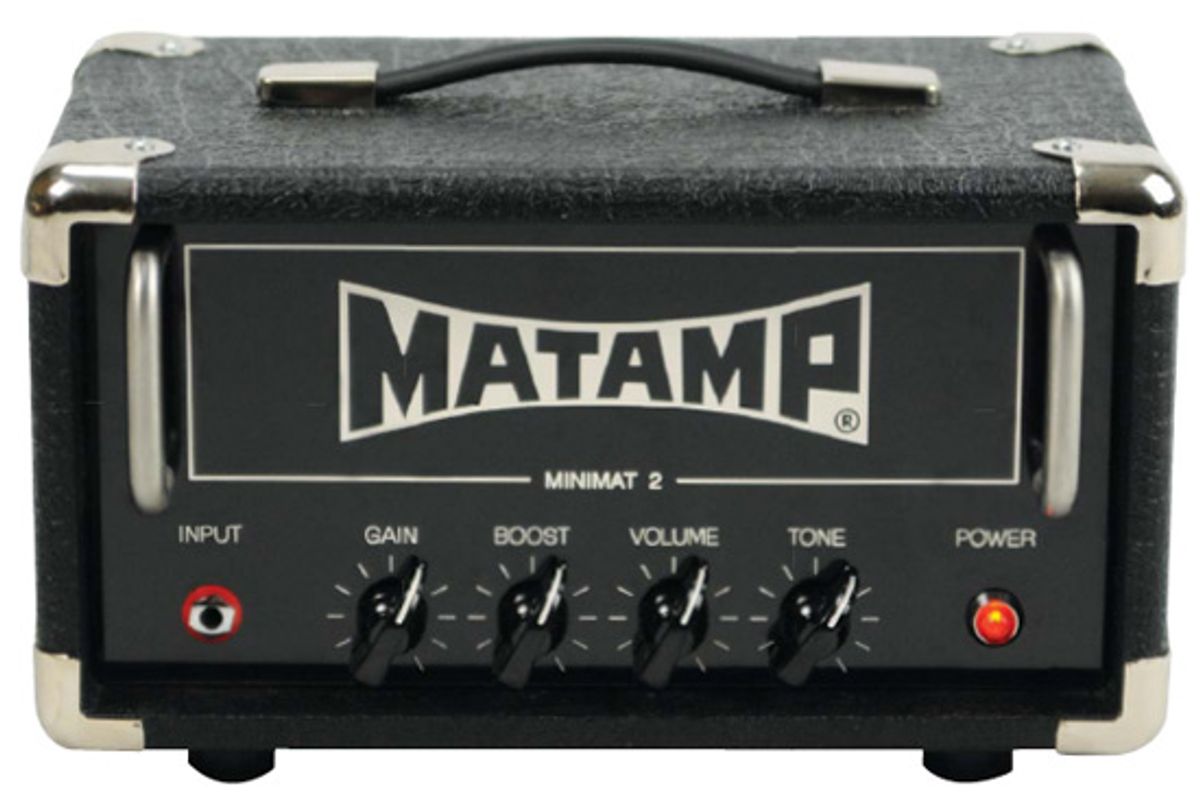Matamp''s lunchbox amp offers ''70s rock tones with reasonable volume
Matamp Amplification has quite a history. The tale begins with German radio engineer Mat Mathias, who fled Germany for England during World War II when he was just a child. In 1945, he joined a radio repair business called Radio Craft, and which he eventually purchased. Mathias developed the first Matamp model—the Series 2000—in 1964. Like many guitar amps of the day, it incorporated ideas from contemporary hi-fi circuits. The Series 2000 gained a devoted following after Peter Green used one to record Fleetwood Mac’s “Albatross.” In 1968, Matamp’s most famous product, the 100-watt Orange Matamp, made its debut. Over the years, Matamp products have gained cult status among collectors and players. Though Mathias died in 1989, the company continues to build tube amps in a converted mill workshop in West Yorkshire, England.
In 2005, Matamp joined the low-wattage amp party with their MiniMat head, and in 2007 they updated the original design with a valve-driven (rather than chip-driven) boost and a Master Volume, and rechristened it the MiniMat II.
Take a Tour
Even by miniature amplifier standards, the 12" x 7 1/4" x 6 1/2" MiniMat II head is diminutive. Sporting one Edicron 6V6GT power tube and two JJ ECC83S preamp tubes, the head delivers four watts of power.
The MiniMat’s front panel offers a single input and four controls: Gain, Boost, Volume, and Tone. The Boost knob lets you preset additional gain and turn it on and off with a footswitch. The rear panel provides 16- and 8-ohm speaker outputs, a footswitch jack for the Boost circuit, a mono RCA direct out, and a handy power attenuator that’s wired to the 8-ohm speaker jack.
After eyeballing the exterior, I couldn’t resist peering inside. Sliding the chromed chassis out from the head shell, I inspected the component layout and milling, and was impressed by the impeccable workmanship. Matamp products are all handmade, and the company’s attention to detail really shows with the MiniMat II.
Pint-Sized Punch
Plugging in a Gibson Les Paul Custom with Tom Anderson pickups, I began exploring the MiniMat II’s sonic palette. For my initial tests, I used a Matamp 112S cabinet, loaded with a single 25-watt Celestion G12M Greenback speaker. In short order, I was rewarded with superb, smooth tones reminiscent of several mid-’70s Orange heads I’ve had the pleasure of playing over the years. For those unfamiliar with that era of Orange models, the highs are very smooth and biting, and the strong, growling midrange is supported by a fuzzy, blooming low end. The MiniMat II captured this tone extremely well, though it lacked the thick, fuzzy lows. That’s not surprising, though, because you can only create that type of burly bottom by pushing a high-wattage amp through a speaker cabinet with several drivers. Because of this, the MiniMat II’s drive tone is compelling, but somewhat limited.
Kicking on the boost, I found some great overdriven lead sounds that reminded me of Paul Kossoff’s fat tone with Free. However, even with the boost engaged, the MiniMat II is not a high-gain, fire-breathing beast. In terms of preamp gain, I was reminded of older Supro combo amps.
If you’re a fan of Matamp tone and are looking for a big pristine sound, you’ll need to explore the company’s higher-wattage heads, such as the GT1. The MiniMat II doesn’t have the headroom to produce pristine clean tones at a significant volume. Even playing a Fender American Telecaster, I found it difficult to coax a tone out of the MiniMat II that didn’t have at least a little grit on it.

Cab Experimentation
One thing I’ve noticed playing low-wattage heads is that the cabinet you run them through dramatically affects the overall sound. In fact, with small amps, the cabinet seems to play a larger role in the sonic equation than it does with higher-wattage heads. The Matamp 112S cabinet with the G12M Greenback was a great match for the MiniMat II, because this semi-open cab delivers a warm, expansive tone. But after I plugged the MiniMat into a Krank Revolution Jr. 1x12, the sound became more defined and focused, with greater projection and aggression. This didn’t surprise me, given the Krank’s closed-back design and solid-poplar construction. If you get a chance to test the MiniMat II, I highly recommend experimenting with different cabinets, including Matamp’s closed-back models.
The Verdict
The MiniMat II has an astonishing ability to recreate early-’70s overdrive tones at reasonable volumes. Its lack of versatility might turn off some players, but in fairness, it isn’t designed to be a do-all amplifier. With its attenuator and line out, the MiniMat II is a great amp for recording distorted guitar tones. If you’re in the market for a studio head with a British accent, absolutely give this one a try.
Buy if...
you want to practice or record with great ’70s overdrive tones.
Skip if...
you demand versatility and/or higher volume.
Rating...
Street $990 - Matamp Amplification - matamp.co.uk |

